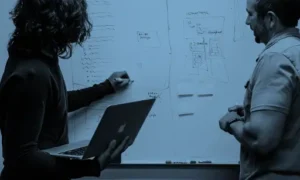Creating a beautiful, functional outdoor space is a priority for many homeowners, but traditional landscaping can be costly, time-consuming, and resource-intensive. Artificial grass offers an eco-friendly alternative that not only enhances curb appeal but also promotes sustainable living. By reducing water usage, minimizing maintenance, and eliminating the need for harmful chemicals, artificial grass is transforming modern landscaping.
This article explores the environmental, financial, and practical benefits of artificial grass and how it contributes to greener, more sustainable outdoor spaces.
The Environmental Benefits of Artificial Grass
Switching to artificial grass is one of the most impactful ways to reduce the environmental footprint of your outdoor space.
1. Water Conservation
- Traditional lawns require significant amounts of water for maintenance, especially in dry climates.
- Artificial grass eliminates the need for irrigation, helping conserve thousands of gallons of water annually.
2. Chemical-Free Maintenance
- Fertilizers, pesticides, and herbicides used on natural grass can contaminate soil and water supplies.
- Artificial grass requires no chemicals, making it a safer choice for the environment and local ecosystems.
3. Reduced Carbon Emissions
- Gas-powered mowers and trimmers contribute to greenhouse gas emissions.
- Artificial grass eliminates the need for regular mowing, reducing carbon output.
4. Recycling Opportunities
- Many artificial grass products are made from recyclable materials, and at the end of their lifecycle, they can be repurposed or recycled again.
5. Financial Savings Over Time
While artificial grass has an upfront cost, its long-term financial benefits make it a worthwhile investment.
6. Eliminates Water Bills for Lawn Care
- By removing the need for irrigation, homeowners can significantly reduce their monthly water expenses.
7. No Maintenance Costs
- Traditional lawns require ongoing investments in fertilizers, weed control, and equipment maintenance.
- Artificial grass removes these recurring costs, saving money year after year.
8. Longevity and Durability
- High-quality artificial grass can last up to 20 years with minimal upkeep, providing long-term value.
9. Enhanced Property Value
- A well-maintained, low-maintenance lawn can increase curb appeal, potentially raising property resale value.
Practical Advantages of Artificial Grass
Beyond its environmental and financial benefits, artificial grass simplifies outdoor living in numerous ways.
1. Minimal Maintenance
- Artificial grass requires little more than occasional rinsing and debris removal, freeing up time for other activities.
2. Consistent Aesthetic
- Unlike natural grass, which can develop bald patches or discoloration, artificial grass maintains a lush, vibrant appearance year-round.
3. Pet-Friendly Solution
- Artificial grass is durable enough to withstand pet activity and easy to clean, making it an excellent choice for pet owners.
4. Weather Resistance
- Whether in extreme heat, heavy rain, or cold conditions, artificial grass retains its form and color, ensuring a beautiful lawn in any climate.
Artificial Grass and Water-Sensitive Regions
For regions prone to drought or water restrictions, artificial grass offers a practical solution to maintain green spaces without overburdening local water supplies.
1. Compliance with Water Restrictions
- Many municipalities impose water limits during dry seasons. Artificial grass allows homeowners to adhere to these restrictions without sacrificing aesthetics.
2. Reducing Urban Heat Island Effect
- While natural grass cools surrounding areas, artificial grass reflects heat. To address this, many manufacturers now produce heat-resistant options that reduce heat absorption.
3. Long-Term Sustainability
- In areas facing water scarcity, switching to artificial grass contributes to sustainable water management efforts.
The Role of Artificial Grass in Sustainable Landscaping
Sustainable landscaping focuses on creating outdoor spaces that require fewer resources while supporting the environment. Artificial grass is a cornerstone of this approach, enabling homeowners to design eco-friendly landscapes without compromising functionality or beauty.
1. Combining Artificial Grass with Native Plants
- Pairing artificial grass with drought-resistant or native plants reduces water use and promotes biodiversity.
2. Innovative Design Possibilities
- Use artificial grass for pathways, patios, or decorative features to create unique, resource-efficient landscapes.
3. Reducing Soil Erosion
- Artificial grass provides stability on slopes or uneven terrain, preventing soil erosion during heavy rains.
Overcoming Misconceptions About Artificial Grass
While artificial grass offers numerous benefits, some misconceptions can deter homeowners from considering it.
1. Heat Concerns
- While artificial grass can become warm in direct sunlight, modern products incorporate cooling technologies to reduce surface temperature.
2. Lack of Drainage
- High-quality artificial grass features advanced drainage systems, allowing water to pass through easily and preventing pooling.
3. Artificial Appearance
- Today’s artificial grass is designed to mimic the texture, color, and feel of natural grass, offering a realistic alternative.
By understanding these innovations, homeowners can make informed decisions about incorporating artificial grass into their landscapes.
Choosing the Right Artificial Grass
Selecting the right type of artificial grass is essential to achieving a durable, aesthetically pleasing result.
1. Consider Usage Needs
- For high-traffic areas, choose durable options with dense fibers.
- For decorative purposes, lightweight products may suffice.
2. Evaluate Material Quality
- Look for UV-resistant materials to prevent fading and ensure longevity.
- Ensure the product is made from non-toxic materials for safety.
3. Seek Professional Installation
- While some homeowners opt for DIY installation, working with professionals ensures proper placement and long-lasting results.
Brands like Bella Turf provide a range of high-quality artificial grass options, catering to various needs and preferences while emphasizing durability and environmental benefits.
Applications Beyond Traditional Lawns
Artificial grass isn’t limited to residential lawns—it’s also a versatile solution for other outdoor spaces.
1. Playgrounds and Parks
- Soft, durable surfaces ensure safety for children while minimizing maintenance for public spaces.
2. Sports Fields
- Artificial turf provides consistent performance for athletes and withstands heavy use.
3. Commercial Spaces
- Businesses use artificial grass to create inviting landscapes, rooftop gardens, or indoor green areas.
4. Event Spaces
- Temporary installations of artificial grass enhance aesthetics for weddings, festivals, and other events.
Final Thoughts
Artificial grass is revolutionizing landscaping by offering an eco-friendly, cost-effective, and low-maintenance alternative to traditional lawns. By conserving water, reducing carbon emissions, and eliminating the need for harmful chemicals, it supports sustainable living while delivering lasting beauty and functionality.
For homeowners and businesses alike, artificial grass is more than just a landscaping solution—it’s a commitment to a greener future. With trusted providers like Bella Turf offering high-quality products, creating an eco-friendly outdoor space has never been easier or more rewarding.
Read more from tech news



































